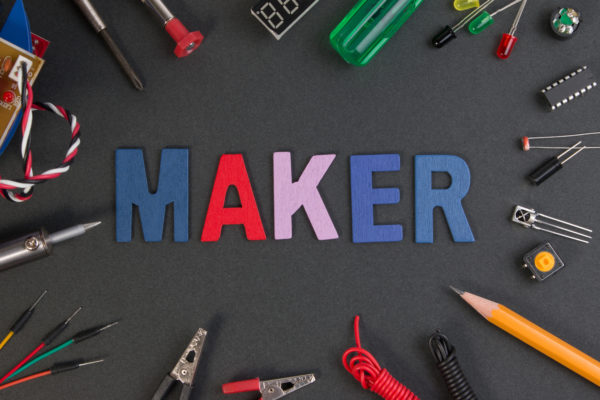Maker culture is going mainstream. The maker industry is projected to grow to more than $8 billion by 2020, and with the maker movement infiltrating classrooms, after-school clubs and homes, it’s no wonder.
But where is the maker movement strongest? A new report from robotics and open-source hardware provider DFRobot aims to find out by analyzing DIY-labeled products hosted on Kickstarter.
While maker culture originated with developers and engineers, there has been a recent shift toward maker projects for students. One school district in Pennsylvania, for example, partnered with Carnegie Mellon University to build maker spaces in its middle and high schools, encouraging students to use technology to design and build their own creations. The results of this learning model speak for themselves, with the district rising in state education rankings, as well as experiencing fewer high school dropout rates.
(Next page: How many projects are focused on the classroom?)
Much of the focus has been on how the maker movement fits into classrooms and how it aligns with students, but 50 percent of the Kickstarter projects DFRobot analyzed are designed for developers and engineers. Thirty-two percent are intended for hobbyists and 10 percent are for students.
Just four percent of the DIY entrepreneurs in the “DIY” Kickstarter sample were female, while 38 percent were male. Other projects in the sample were introduced by companies or by a male/female team.
“The concept of ‘maker culture’ isn’t a new one, but it is starting to generate mainstream appeal through events like the Maker Faire series and crowdfunding platforms like Kickstarter,” said Ricky Ye, CEO of DFRobot. “It’s also infiltrating classroom learning models, with teachers implementing hands-on activities to facilitate student interest in STEM (science, technology, engineering and math) subjects. As today’s youth becomes more accustomed to building and designing on their own, it’s exciting to think of what ‘maker culture’ will look like in the next decade and beyond.”
Interestingly, despite the low number of solo female-founded projects, the majority of them (eighty-nine percent) were fully-funded, demonstrating a small, but effective group of female creators. Of the 38 percent of solo male-founded projects identified, 86 percent were fully-funded. Of company-posted projects, 93 percent were fully funded, suggesting that collaborative team-based products are the most appealing for consumers.
Hardware is one of the most popular types of maker products available on Kickstarter (24 percent of projects); 77 percent of the hardware products examined by DFRobot are from North America, likely because maker culture originated in the region and is continually encouraged through initiatives like the Obama administration’s Nation of Makers.
Twenty-one percent of Kickstarter projects are DIY electronics, but only 8 percent of Kickstarter projects involve robots and just 6 percent involve 3D printing. 3D printing ranks among the highest-funded maker projects, with each project receiving an average of $319,482. As context, robots receive only $73,500 on average. This major support of 3D printers may be due to the market’s growth projection of more than $32 billion by 2023.
“Most DIY products on Kickstarter are primarily suited for advanced, tech-savvy individuals like developers and engineers,” said Ye. “That means there’s a huge opportunity for EdTech to produce more projects for students – for use at home or in the classroom. It’s vital that we foster STEM skills from a young age, especially as the maker mindset continues to dominate.”
- Friday 5: College and career readiness - April 12, 2024
- Cybersecurity: eSN Innovation Roundtable - April 11, 2024
- School-home communication remains a challenge for many districts - April 10, 2024

